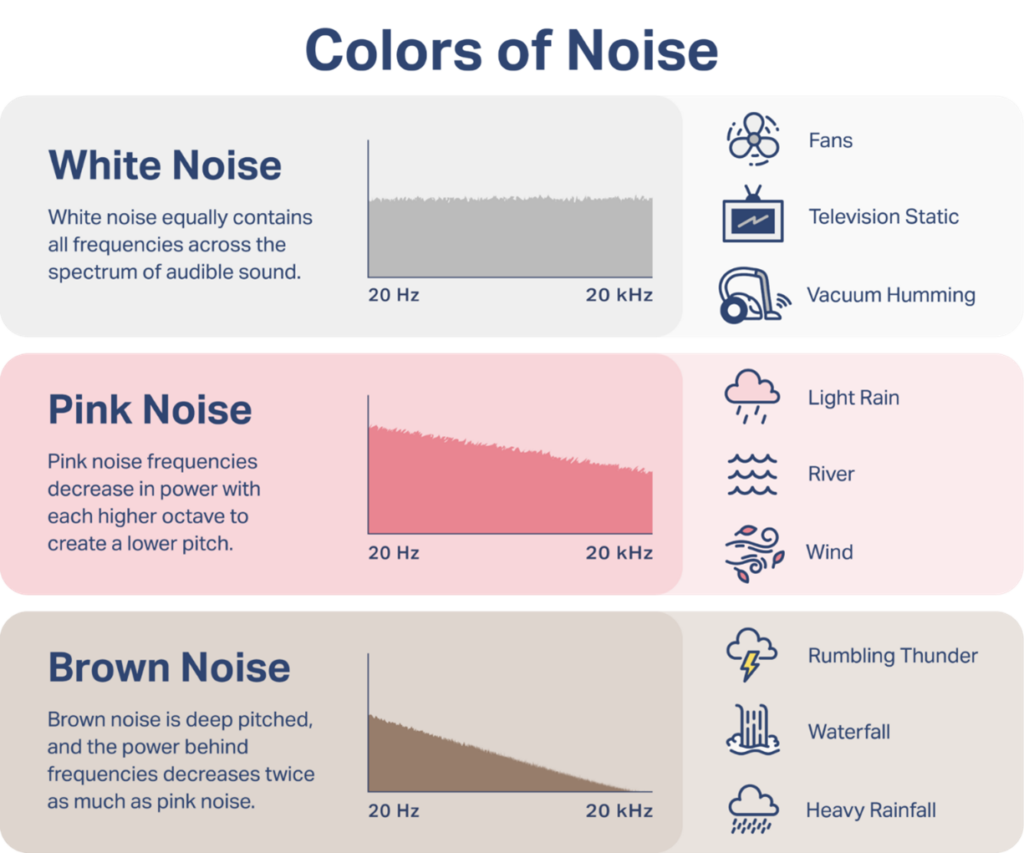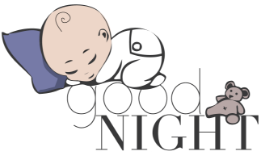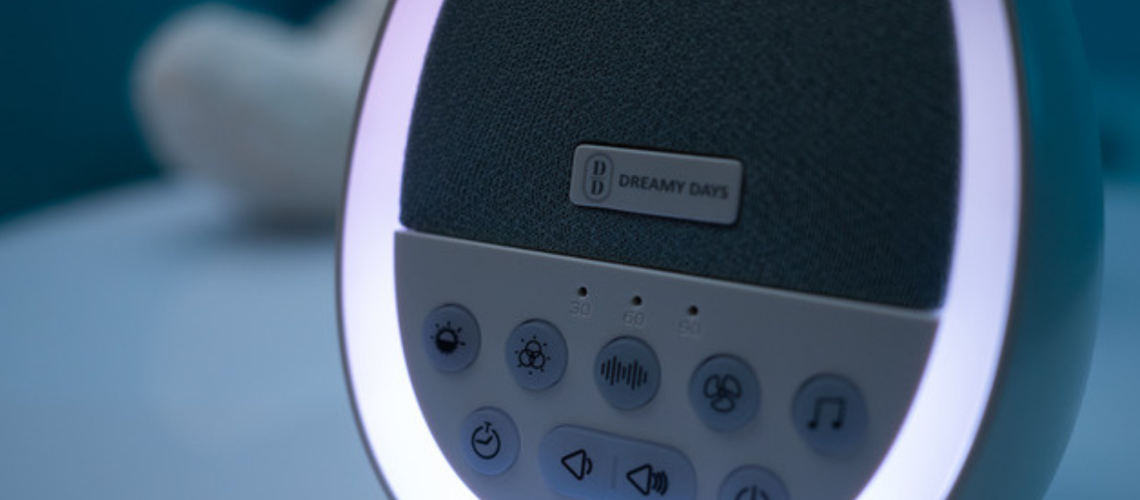By Sarah Bibi Patel – Good Night Consultant
In helping mums on their journey to better sleep with their babies, the topic of white noise often comes up. Today, I’ll share the basics of white noise so that you can make an informed decision on whether you would like to include it as part of your baby’s sleep routine.
What is white noise?
White noise refers to a noise that contains all frequencies across the spectrum of audible sound in equal measure. People often liken white noise to the static that comes from an untuned radio or television station.
White noise mimics womb sounds, such as your heartbeat and digestive noises, and creates a soothing, comfortable and familiar environment where babies feel protected and calm.
The continuous sounds also help to drown out loud or unexpected noises that can be stimulating to babies or wake them up from their sleep. As part of a pre-sleep routine, white noise can also act as a cue for sleep. With soothing sounds creating a cocoon of sorts, your baby may be more likely to fall asleep faster and to sleep longer.
Colours of noise
Of late, you will find different colours of noise on various white noise apps and machines. The image below helps you to understand the differences of these different colours of noise:

Is white noise really necessary to help my baby to sleep?
Whilst research does suggest that using white noise can improve sleep, I don’t ordinarily suggest using it as a rule or a standard. If you find that your baby is particularly sensitive to sounds and you find that perhaps they wake more often due to normal sounds around the house, then yes, I would consider using white noise.
If you are a parent to multiples (twins, triplets), I would also consider using white noise, as it will help the one to stay sleeping if the other(s) is crying.
If you are a mum with a young baby and you have a toddler running around the house, again, I would consider using white noise to help your baby sleep. You cannot realistically expect a toddler to be quiet all day!
I always suggest to parents to first observe your baby and allow them to sleep without white noise. If they manage to sustain beautiful sleep without the white noise, that’s fantastic!
How to use white noise
If white noise is used incorrectly, it can cause long-term harm to your baby’s hearing, so I urge you to always ensure that you are using it SAFELY:
White noise devices – You have two options:
- White noise machine: This tends to be larger and more expensive, but it might come with better sound quality. The only downside to using a white noise machine is that it might not be practical during load shedding if there is no back-up power option (something important to consider in SA!).
- A smartphone app: This could be more convenient while traveling, since it does not require you to bring any additional devices with you.
If you are opting for a smartphone app, please ensure that the device is on “airplane mode” to prevent the emission of radiofrequency radiation.
Also ensure that your white noise machine/smart device is placed around 2 m away from your child’s sleep space/cot. Never place a device inside your child’s sleep space.
- Sound quality: White noise machines either play a digital white noise recording or mechanically create a white noise sound. Check reviews of the white noise products you are considering to see what other customers have said about the sound quality.
- Volume control: Being able to control the volume of your white noise machine is essential. Check the manufacturer’s specifications for the lowest and highest available volumes to ensure that the white noise machine meets your needs.
In 2014, the American Academy of Pediatrics (AAP) tested 14 white noise machines designed for infants and found that all of the machines at maximum output exceeded hospital-recommended noise levels. As a result of this study, the AAP released their own recommendations for how close white noise machines should be to a child’s sleep space and what they considered safe decibel levels.
According to the AAP, white noise machines should be placed at least 7 feet (2 m) away from a baby’s sleep space and the volume should be lower than the maximum volume setting — generally no louder than 50 dB, or the volume of an average vacuum cleaner or hair dryer.
To be safe, I would suggest downloading an app on your mobile device that will measure the decibel level of the white noise to ensure that it is being used at a safe decibel level.
- Sleep timer: Most white noise machines have some type of sleep timer, but their functionality varies. Some allow the user to programme in any amount of time, while others have preset blocks of time you can choose from.
We recommend that if you’re using white noise, it needs to be played for the ENTIRE duration of both naps and night sleep.
How/when do I stop using white noise?
Fortunately, white noise is usually not an incredibly strong sleep association. You can choose to stop using it whenever you are comfortable to do so.
You can slowly reduce the volume of the white noise over a period of time until it’s all the way down to zero – Voila! Done!
At the end of the day, some may consider using white noise to be too much of “admin”, and that’s ok. It is definitely NOT a magic wand that is going to solve your sleep issues. Rather, it is an effective tool that can assist with sleep, after taking ALL of the building blocks of sleep into consideration.
Resources:
https://huckleberrycare.com/blog/white-noise-for-babies-sleep
#sleeptraining

